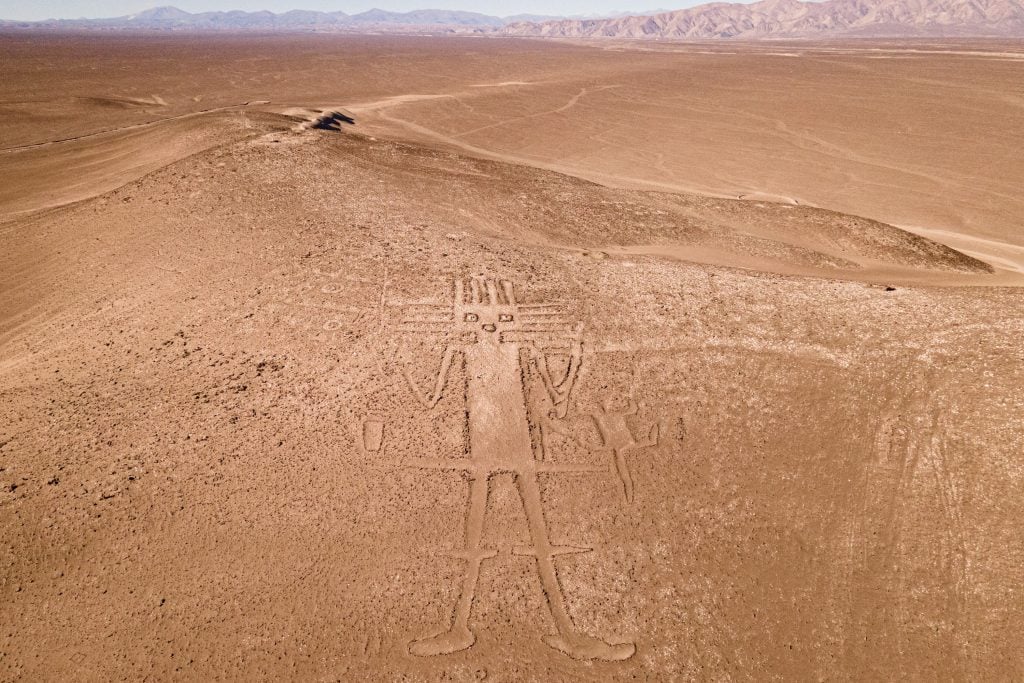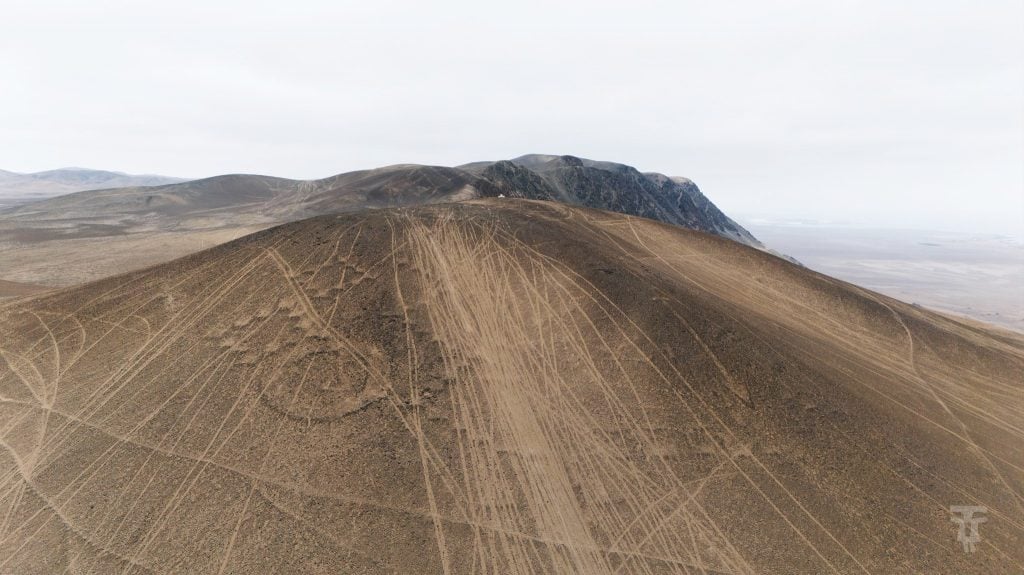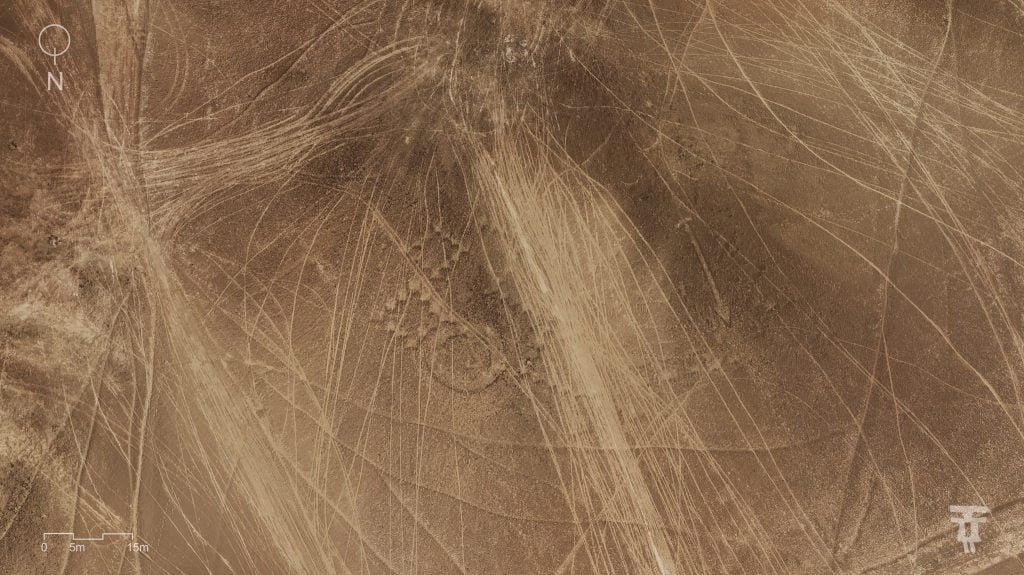Archaeology & History
Bikers and Off-Roaders Are Endangering Ancient Chilean Geoglyphs
There are more than 5,000 geoglyphs in the Atacama Desert.

There are more than 5,000 geoglyphs in the Atacama Desert.

Richard Whiddington

The rugged terrain of Chile’s Atacama Desert is etched with giant images of llamas, cats, fish, birds, and humans. Together, the geoglyphs recall a time when the barren expanse of sand and rock was a trade route linking the coastal lowlands to the high mountains.
These geometric, zoomorphic, and anthropomorphic figures may be less celebrated than their Peruvian counterparts, the Nazca Lines, but they remain protected Chilean monuments, ones facing a serious threat from human activity according to the region’s cultural activists.
At Alto Barranco in the Tarapacá region, an area in the far north of Chile, the most persistent damage comes from motorcycles and 4×4 vehicles, whose tire tracks are erasing the geoglyphs.

Aerial view of tire tracks across the geoglyphs in the Atacama Desert. Photo courtesy of Atacama Desert Foundation.
The Atacama Desert Foundation, a group that works to protect the park’s archaeological and natural sites, made its concerns public on September 1, publishing a statement criticizing the behavior of local bikers and jeepers.
“The geoglyphs of Alto Barranco have more than one thousand years of history and have survived thanks to the natural conditions of the Atacama Desert,” the foundation said. “However, its current destruction by bikers and jeepers seriously threatens its millennial existence. Where you leave your mark is your decision, just don’t do it on the geoglyphs.”
In a post on social media, the Atacama Desert Foundation shared aerial images of geometric and zoomorphic figures from Caramucho, an area south of the regional capital Iquique, that had been driven over by countless vehicles. The extent to which the bikers and jeepers are knowingly destroying the geoglyphs remains unclear, in part because of the scale of the work—some stretch more than 100 feet, making them difficult to spot from ground level.

Aerial view of tracks across the geoglyphs in the Atacama Desert. Photo courtesy of Atacama Desert Foundation.
Regardless of intention, such damage to national monuments is a crime, said Luis Pérez, the director of the Regional Museum of Iquique. Pérez is partly responsible for reporting these damages and has described the situation as desperate. “This behavior has been formally reported to the Prosecutor’s Office since 2021,” Pérez said. “It’s very serious; this damage is irreversible—it cannot be restored.”
To date, no formal complaints regarding the geoglyphs at Alto Barranco have been brought before Chile’s First Environmental Court, the body tasked with handling national monument damage cases.
Spread over an area of roughly 100-square-miles, the more than 5,000 Atacama Desert geoglyphs were made by pre-Hispanic peoples between 1000 C.E. and 1540 C.E. Often created on the side of hills, they were made by removing the top layer of rock to remove a lighter underlying soil. It is thought they served as a guide to passing travelers.